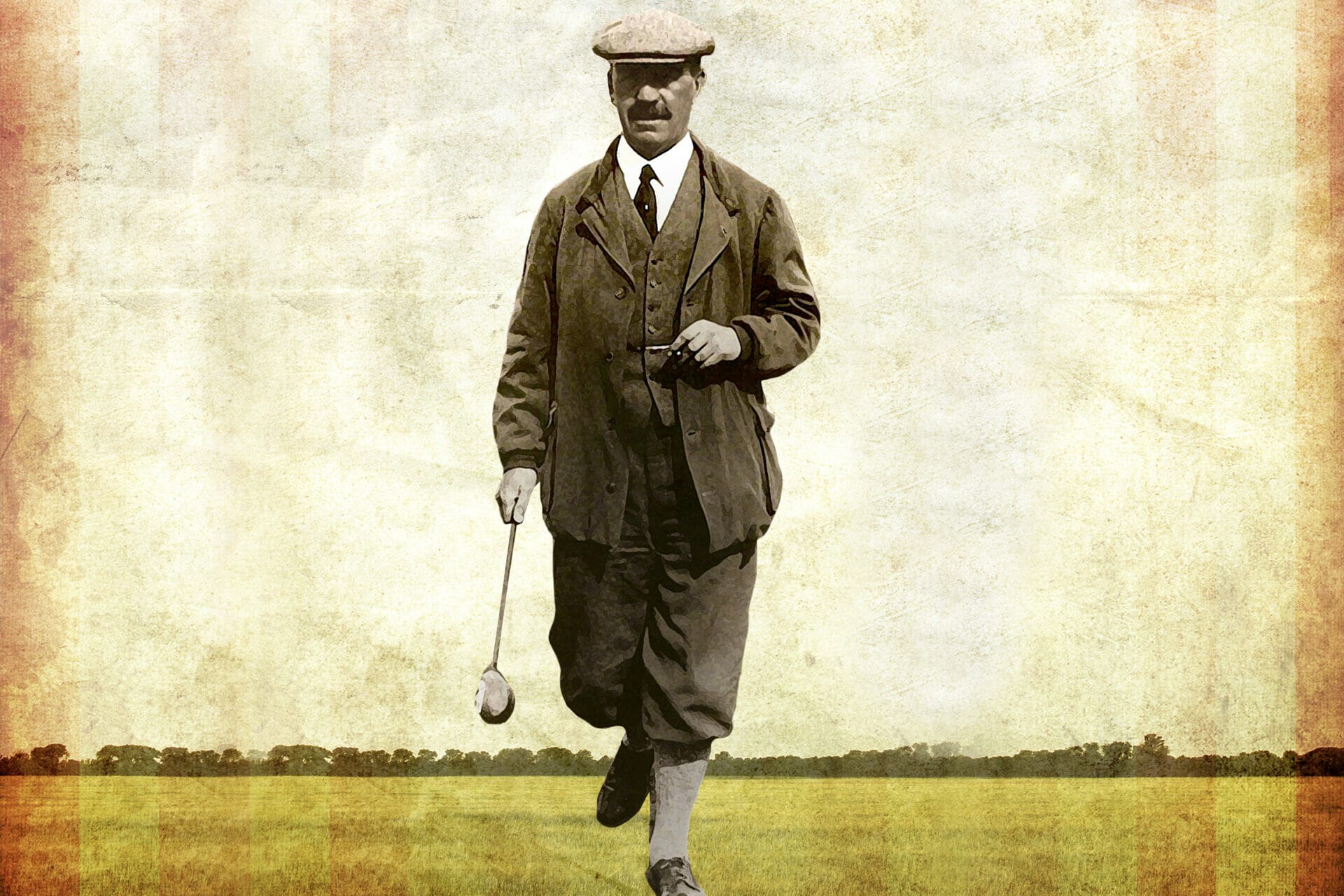When Dr. Alister Mackenzie died suddenly at the age of 64 in early 1934, he could not possibly have forseen that Augusta National, the course he had designed but never actually saw in its finished state, would be the primary reason why, in due course, he would be acclaimed by so many as the ‘greatest golf architect’ of all-time.
Mackenzie would have viewed his own life as a disappointment and unfulfilled, if not, an abject failure. In both his professional and personal life, Mac enjoyed more downs than ups. His marriage was unhappy and he did not enjoy being a medical practitioner. He made several vain attempts to find an alternative career, most notably when he was in the Army as a field surgeon during the Boer War.
He was far more interested in the tactics of war and becoming an expert in the art of camuoflage than wielding his surgeon’s knife. He believed camuoflage could save ‘thousands of lives.’ Unfortunately, the Army did not appreciate his skills in that direction and treated him very badly even though he had demonstrated tremendous personal sacrifice by volunteering to be demoted from the rank of Major in the Medical Corps to Lieutenant in the Engineers, in order to be allowed pursue his camuoflage theories.
Even more upsetting was the messy divorce that scandalised his home club, his beloved Alwoodley Golf Club which he had helped to found and where Mackenzie was ostracised and brushed out of history. It was at Alwoodley where Mac was, for many years, a dictatorial but completely selfless and dedicated, Honorary Secretary practicing the art of golf architecture as a hobby under the occasional guidance of the legendary, Harry S. Colt. The approbrium of his divorce caused him to move to California to start a new life. Sadly, his timing could not have been worse and his arrival in the USA coincided with the upheavals of the Wall Street Crash.
Mackenzie was passioinate about his new, style of ‘artistic architecture’ and it took him a long time to find like minds who would pay him sufficiently to earn a living in a far from secure profession. Money seems to have always been a problem and no project he undertook was more financially problematical than Augusta National, the promoters of which he was vigorously pursuing for upaid bills when he suffered an untimely heart attack and died, three months before the course opened for play in 1932. Shamefully, the money owed was never paid to his estate. There are many shameful things in the murky past of Augusta National and if you want to know more read Curt Sampson’s – The Masters – Golf, Money & Power. It’s an eyeopener!
For someone who subsequently became so famous, Mackenzie’s personality is a mystery. He has been described as ‘disagreeable and arrogant’ but who can say at this remove? The late, Willie MacCavery, who was appointed professional and green keeper at Lahinch in 1927, a few months before Mac arrived to lay out his version of the links, told me personally that Mac was ‘A cranky so-and-so.’ I took that to mean he was a perfectionist in a hurry who did not care to mince his words because he wanted to leave as soon as possible to get on with the next job somewhere else. Mac spent no more than two and a half days laying out his version of Lahinch in 1927. It was left to MacCavery to supervise the work after the architect had left, never to return but what credit did he ever receive?
By reading his books, we can get some idea of The Mackenzie Philosophy and they are well worth the time and effort. Here are a few random quotations to whet your appetite:
“Every golf course should be an interesting and stimulating challenge for the scratch player while also being playable for high-handicappers; an examination of skill rather than muscle. The time wasting, irritation and annoyance of searching for lost golf balls in high grass should be totally eliminated from the game. There should be a minimum of blindness on approach shots. Fairways and greens should be undulating but there should be minimal hill climbing. There should be a large proportion of strong two-shot holes, two or three drive and pitch holes, and at least four one-shot holes of varying lengths and directions. Every hole should have a different character. There should be little walking between greens and tees and the course should be laid out in two distinct loops of nine holes. There should be a number of heroic carries from the back tees but there should also be forward tees for the older, weaker players, who, with the loss of stroke or maybe a portion of a stroke will have an alternative route open to them. The course should be playable all year round with the texture of the fairways and greens equal and the consistency of bounce unvarying. Length has very little to do with the quality of a golf hole. It should be all a matter of getting the correct angle of approach and controlling the distance one hits the ball, in the air and along the turf.”
“It is important to make golf holes look much more difficult than they really are. More pleasure is derived from playing a hole that looks almost impossible and yet is not so difficult as it appears.”
“How often have we known committees, presumably consisting of men of intelligence, receiving the statement that golf is played for fun, with eyes and mouths wide open in astonishment? It is always difficult to persuade them that the chief consideration that should influence us in making any alterations to a golf course is to give the greatest pleasure to the greatest number. Any change to a course that does not do this is manifestly a failure.”
“Golf courses are far too long. Something drastic ought to have been done years ago. We used to play three rounds of 18-holes in a day and considered we had taken an interminably long time if we took more than two hours per round. Today, it frequently takes over three hours.”
Mackenzie wrote in 1931.
“Every good golf course should have some touches of subtlety that prevents the golfer doing a low score without much previous practice.”
“When golf architecture tries to combat distance with distance, i.e. the creation of longer and longer golf courses, it falls prey to the very thing it seeks to control. Golf courses of extreme length reward only players of extreme length.”
“Rough grass is of no value for protecting danger points; it has no effect in keeping people straight, but merely prolongs the length of time players are in the danger zone.”
“The first club of which I was a member had a hut as a clubhouse and beer and sandwich luncheons, yet we got as much health and happiness out of it as any other.”
“It by no means follows that what appears to be attractive at first sight will be so permanently. A good golf course grows on one like a good painting, good music, or any other artistic creation.”
“Unless we provide golf courses full of intricate problems, players will get sick of the game without knowing why they have got sick of it, and golf will die from lack of abiding and increasing knowledge.”
“Many poor golf courses are made in an endeavour to eliminate the element of luck. You can no more eliminate luck in golf than you can in cricket, and in neither case is it possible to punish every bad shot. If you succeeded in doing so you would not only make both games uninteresting, no one would want to play them.”
Perhaps the last words should be left to one of today’s best golf architects, Greg Norman, who said: “Mackenzie was a genius. He forces you to play golf backwards – from green to tee. First, you have to figure out where the pin is on the green, and then figure out where you want to come in from, and then figure out that you have to hit your tee shot to a certain position. It’s like a game of chess, finding the easiest way to play the hardest of holes.”
The big game of chess that is played in early April of every year in Augusta, Georgia is upon us again and we should take a moment to salute the man who managed to figure out such a dramatic routing – Dr Alister Mackenzie.
























Leave a comment